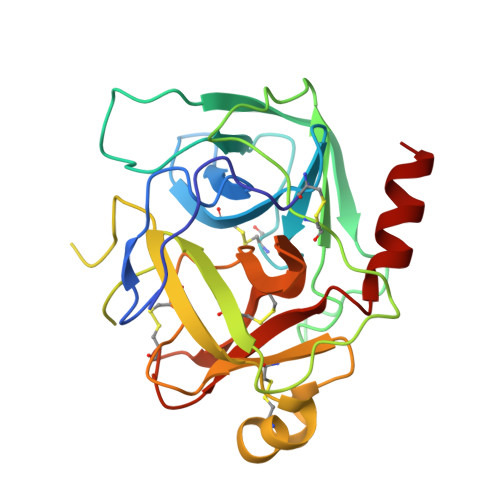Molecular Recognition of Chymotrypsin by the Serine Protease Inhibitor Ecotin from Yersinia Pestis.
Clark, E.A., Walker, N., Ford, D.C., Cooper, I.A., Oyston, P.C., Acharya, K.R.(2011) J Biol Chem 286: 24015
- PubMed: 21531711
- DOI: https://doi.org/10.1074/jbc.M111.225730
- Primary Citation of Related Structures:
2Y6T - PubMed Abstract:
Resistance to antibiotics is a problem not only in terms of healthcare but also biodefense. Engineering of resistance into a human pathogen could create an untreatable biothreat pathogen. One such pathogen is Yersinia pestis, the causative agent of plague. Previously, we have used a bioinformatic approach to identify proteins that may be suitable targets for antimicrobial therapy and in particular for the treatment of plague. The serine protease inhibitor ecotin was identified as one such target. We have carried out mutational analyses in the closely related Yersinia pseudotuberculosis, validating that the ecotin gene is a virulence-associated gene in this bacterium. Y. pestis ecotin inhibits chymotrypsin. Here, we present the structure of ecotin in complex with chymotrypsin to 2.74 Å resolution. The structure features a biologically relevant tetramer whereby an ecotin dimer binds to two chymotrypsin molecules, similar to what was observed in related serine protease inhibitor structures. However, the vast majority of the interactions in the present structure are distinctive, indicating that the broad specificity of the inhibitor for these proteases is based largely on its capacity to recognize features unique to each of them. These findings will have implications for the development of small ecotin inhibitors for therapeutic use.
Organizational Affiliation:
Department of Biology and Biochemistry, University of Bath, Claverton Down, Bath BA2 7AY, United Kingdom.
















